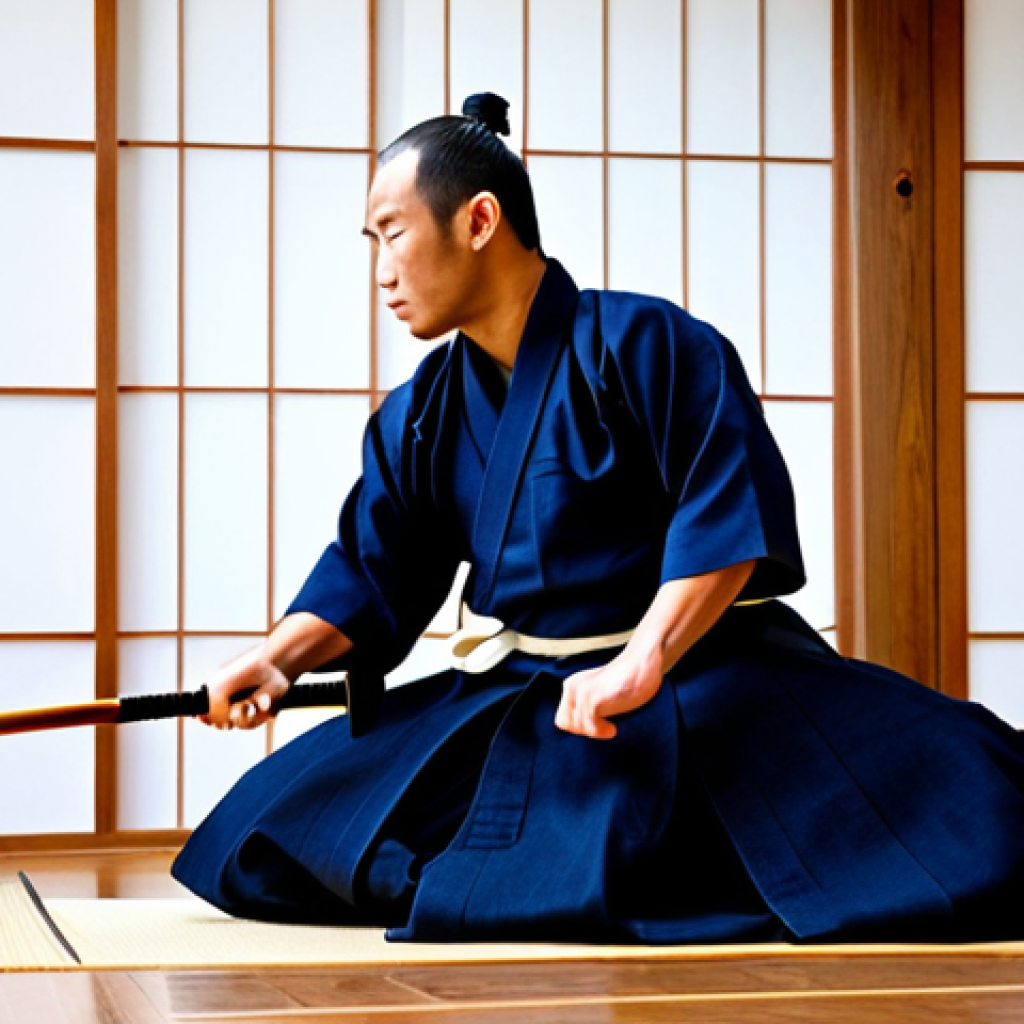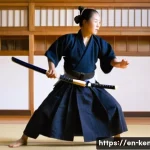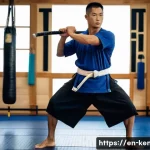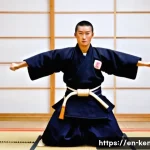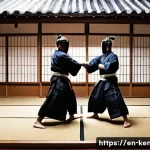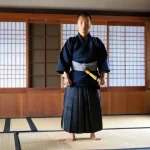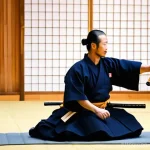You might think of Kendo as just swinging bamboo swords, but underneath that striking simplicity lies a world of precise regulations that elevate it from mere sparring to a profound martial art.
I recall the precise moment I truly appreciated Kendo’s rigid yet graceful framework, watching a high-stakes match where every feint and strike was judged with an eagle eye.
It’s not just about hitting; it’s about hitting correctly, with spirit and posture, making the rules the very heartbeat of the sport. As someone deeply invested in the evolution of traditional practices, I’ve noticed conversations intensifying around how Kendo maintains its universal standards globally while embracing its deep historical roots.
There’s even talk about how future technologies, like advanced AI-driven sensors, might one day refine judging accuracy, sparking a fascinating debate between tradition and technological enhancement.
This ongoing balance between honoring the past and peering into the future is what makes understanding the official rules so utterly fascinating and crucial for anyone involved.
Let’s delve deeper and uncover the specifics.
The beauty of Kendo isn’t merely in its athleticism or the swift clang of bamboo against bamboo; it resides deep within the nuanced interpretations and unwavering adherence to its intricate regulations.
When I first stepped onto the dojo floor, I was struck by how every movement, every breath, seemed to be governed by an unspoken code, far beyond what any rulebook could explicitly detail.
It’s a profound testament to the art’s longevity, a dynamic framework that has shaped countless practitioners, including myself, transforming raw enthusiasm into disciplined focus.
The constant evolution of understanding these rules, moving from simply knowing them to truly *feeling* them in the heat of a shiai, is an ongoing journey that never ceases to captivate me.
I’ve often seen beginners struggle with this, their attempts at a strike looking technically sound but lacking the “spirit” that a seasoned judge instinctively recognizes.
It’s a subtle yet critical distinction that underlines the depth of Kendo.
The Philosophy of the Valid Strike: More Than Just Contact
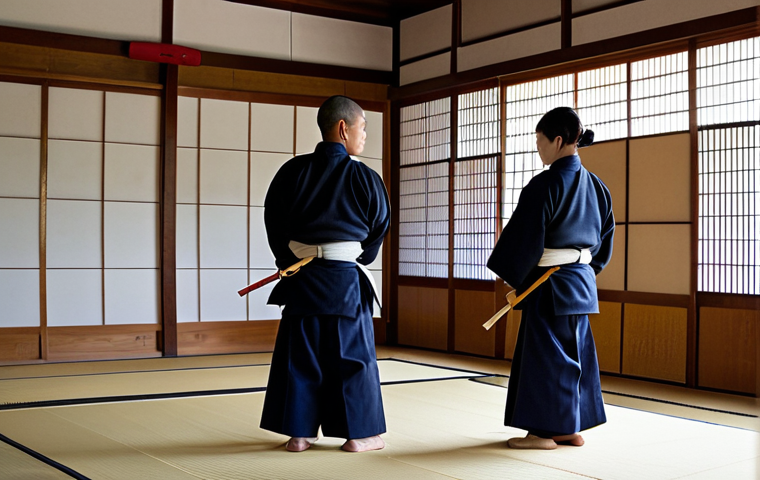
The concept of a “valid strike” in Kendo transcends mere physical impact; it’s a holistic culmination of spirit, sword, and body working in perfect, synchronized harmony.
I vividly recall my first serious shiai where I thought I had scored a perfect *men* strike, only for the flags to remain stubbornly down. My sensei later explained that while my *shinai* connected, my posture was slightly off, my *kiai* lacked conviction, and my follow-through was incomplete.
It was a humbling yet vital lesson that underscored how deeply entwined the physical and spiritual elements are in Kendo’s scoring system. This isn’t just about hitting a target; it’s about executing a strike that embodies the very essence of your intent and training, demonstrating a complete and committed attack.
It’s an aspiration, a constant push for perfection that makes every single point hard-won.
Cultivating Ki-Ken-Tai-Ichi: The Unified Attack
- The Spirit’s Roar (Ki): Before any physical contact, the *kiai* must resonate with genuine intent and power. I’ve learned that a strong *kiai* isn’t just noise; it’s an exhalation of your fighting spirit, a projection of your will to win. Without it, even a clean strike feels hollow, devoid of the necessary conviction. It’s the roar that communicates your determination, unnerving your opponent and signaling your commitment to the strike. In my own practice, focusing on a powerful, purposeful *kiai* has often been the key to turning a near-hit into a decisive point, transforming a mere swing into a declaration.
- The Blade’s Precision (Ken): The *shinai* must strike with accuracy and proper angle, demonstrating correct sword handling. The target area, be it *men*, *kote*, *do*, or *tsuki*, must be struck with the *datotsu-bu*, the designated hitting portion of the *shinai*. I remember countless hours drilling *suburi*, focusing on the precise arc and snap of the wrist to ensure the blade lands true. It’s about the exact moment of impact, the crisp, clear connection that tells both the practitioner and the judge that the strike was not merely a graze, but a purposeful engagement of the sword.
- The Body’s Momentum (Tai): Proper footwork and body control are paramount, ensuring the strike is delivered with full commitment and balance. Your body must propel you through the strike, maintaining stability and forward motion, which is often referred to as *zanshin*, or continued alertness. My personal breakthrough in Kendo came when I finally understood that my body isn’t just a vehicle for my *shinai*; it’s an integral part of the attack, creating the power and stability needed for a truly valid strike. Without proper *tai-sabaki* (body movement), even a perfectly aimed *shinai* becomes an isolated action, easily dismissed.
The Subtle Art of Zanshin: Beyond the Point
*Zanshin*, often translated as “remaining mind” or “follow-through,” is perhaps the most elusive yet crucial element of Kendo. It’s the continuous state of mental and physical readiness that must be maintained after delivering a strike, demonstrating that you haven’t dropped your guard and are prepared for any counter-attack.
I’ve seen many aspiring kenshi, myself included, lose points despite landing a clean strike simply because they relaxed too soon, their focus dissolving the moment their *shinai* connected.
It’s a testament to Kendo’s philosophy that a single perfect strike is insufficient; what truly matters is the unbroken flow of vigilance and readiness that surrounds it.
This isn’t just about safety; it’s about demonstrating complete mastery over the moment, proving that your attack was not a lucky shot but a deliberate, controlled action.
Maintaining Awareness and Readiness
- Post-Strike Vigilance: Immediately after a strike, one must maintain their posture, balance, and awareness of the opponent’s position. This often means moving through the opponent, establishing a safe distance, and being ready to re-engage or defend. I once learned this the hard way during a grading exam; my *men* strike was deemed excellent, but my failure to properly reposition myself and maintain *zanshin* led to a less-than-perfect score. It’s a constant battle against the natural impulse to relax after effort, requiring profound discipline.
- The Ongoing Engagement: *Zanshin* signifies that the engagement isn’t over until the *judges* declare it so. It shows respect for the opponent and the art itself, demonstrating that one’s focus remains sharp. It’s a continuous conversation with your opponent, even after the initial exchange, anticipating their next move and maintaining your own tactical advantage.
Disqualifications and Prohibitions: The Unseen Rules
While the rules of valid strikes are often the focus, understanding what *not* to do is equally critical in Kendo. Certain actions, whether intentional or accidental, can lead to warnings or even disqualification, reflecting Kendo’s emphasis on etiquette, safety, and fair play.
I’ve witnessed matches where a momentary lapse in discipline, like pushing an opponent or stepping out of bounds, led to a point being awarded against the transgressor, even if they had been performing well otherwise.
These prohibitions are not just arbitrary restrictions; they embody the core values of respect and discipline that permeate every aspect of Kendo. Ignoring them not only results in penalties but also disrespects the spirit of *budo*.
Foul Play and Technical Infractions
- Unsporting Conduct: This encompasses actions like striking forbidden areas, intentionally pushing or grappling, or expressing frustration through inappropriate gestures or language. I once saw a seasoned practitioner receive a warning for excessive shouting after a point, a stark reminder that even expressions of passion must remain within the bounds of decorum. It underscores the profound importance of self-control and respect, even in the heat of competition.
- Loss of Equipment/Posture: A *shinai* dropped, a *men* falling off, or consistently stepping out of the designated court boundary are all infractions. I’ve certainly had my *shinai* slip from my sweaty palms more times than I care to admit during intense training, a common enough occurrence that reminds me to always keep a firm, yet relaxed grip. These rules ensure the safety and continuity of the match, preventing unnecessary pauses and maintaining the flow of the contest.
Judging Criteria: The Human Element and Its Nuances
The judging in Kendo is a fascinating blend of objective criteria and subjective interpretation, a human art form in itself. Three judges, each with a white and red flag, determine the validity of strikes based on their collective assessment of Ki-Ken-Tai-Ichi and Zanshin.
It’s an incredibly demanding role that requires not only deep understanding of the rules but also an intuitive grasp of the flow and spirit of a match.
I’ve had the privilege of observing judging seminars, where experienced sensei debated the minutiae of specific scenarios, highlighting just how complex and nuanced the decision-making process can be.
It’s never as simple as “did the *shinai* hit?”; it’s about “was the *strike* complete and sincere?”
The Collective Decision and Its Challenges
- Two-Flag Majority: At least two judges must raise the same flag (red or white) simultaneously for a point to be awarded. This system aims to mitigate individual bias and ensure a consensus. I remember once being heartbroken by a decision that went against me, only to later understand the subtle reasons behind the judges’ unified flags. It’s a system designed to seek common ground, reflecting the spirit of fairness and collective judgment.
- Interpreting Intent and Spirit: This is where the human element truly shines. Judges are not just watching for physical contact; they are observing the overall energy, decisiveness, and commitment of the strike. They look for the “snap” in the wrist, the conviction in the *kiai*, and the fluid follow-through. It’s an interpretation that comes from years of personal practice and observation, making it a truly human-centric evaluation.
| Kendo Concept | Common Misconception | Reality / Deeper Meaning |
|---|---|---|
| Valid Strike | Just hitting the target area with the *shinai*. | Requires full commitment (Ki-Ken-Tai-Ichi), proper posture, spirit, and follow-through (*Zanshin*). A mere tap isn’t enough. |
| *Kiai* | Loud shouting to scare the opponent. | A focused exhalation of spirit, signaling intent and commitment, empowering the strike, and demonstrating a unified attack. |
| *Zanshin* | Finishing your strike strongly. | Continuous mental and physical alertness *after* the strike, ready for any counter-attack, showing complete control and awareness. |
| Winning a Point | Scoring more hits than your opponent. | Scoring valid, purposeful strikes that meet strict criteria, showcasing skill and respect for the art, not just quantity. |
Etiquette and Conduct: The Unspoken Pillars of Kendo
Kendo isn’t just a sport; it’s a *budo*, a martial way that emphasizes character development and respect above all else. The rules of etiquette, though not always explicitly detailed in competition handbooks, are deeply ingrained in every practice and match.
From the initial bow upon entering the dojo to the final bow after a challenging bout, every gesture carries profound meaning. I’ve personally found that adhering to these unspoken rules has not only improved my Kendo but also fostered a greater sense of discipline and humility in my daily life.
It’s a constant reminder that the journey is as important as the destination, and how you conduct yourself speaks volumes about your understanding of the art.
Respecting the Art and Each Other
- Bowing (Rei): Bowing before and after practice, before and after a match, and even before and after putting on and taking off your *bogu* (armor), signifies respect for the dojo, your sensei, your opponents, and the art itself. I remember feeling awkward at first with the sheer number of bows, but now it feels as natural as breathing, a vital part of the ritual that grounds me.
- Proper Attire and Equipment: Maintaining clean and well-kept *kendogi*, *hakama*, and *bogu* is a sign of respect for oneself and the practice. It’s a small detail, perhaps, but one that reflects dedication and attention to detail. I always make sure my gear is meticulously cared for, as it’s an extension of my commitment to Kendo.
- Courtesy and Sportsmanship: Even in the heat of a competitive match, maintaining composure, refraining from celebrating excessively, and acknowledging a good strike from your opponent are paramount. This creates an environment of mutual respect and learning, rather than pure adversarial competition.
The Evolving Landscape of Kendo Regulations
While Kendo traditions run deep, the rules are not entirely static. There’s an ongoing, subtle evolution, especially in how they’re interpreted and applied across different regions and international competitions.
For instance, discussions around video reviews for controversial calls, while not universally adopted, occasionally surface, highlighting the tension between preserving tradition and embracing modern technological advancements for fairness.
I’ve participated in seminars where these very debates unfolded, with passionate arguments on both sides. It’s a fascinating dynamic that ensures Kendo remains relevant while holding true to its foundational principles.
This adaptive quality, the willingness to reflect and refine, is what truly sets Kendo apart in my mind; it’s a living, breathing martial art, not a fossilized relic.
Global Standards vs. Local Interpretations
- International Federation Guidelines: The International Kendo Federation (FIK) plays a crucial role in standardizing rules for global competitions, aiming for uniformity. This ensures that a *men* strike in Tokyo is judged by the same criteria as one in London or New York. My experience competing internationally revealed how subtle regional differences in training styles can influence a competitor’s approach, yet the core judging principles remain steadfast.
- Ongoing Dialogue and Refinement: Like any living art, there’s always a discussion among high-ranking sensei about how best to interpret rules to maintain the integrity of Kendo while adapting to changing contexts. This ongoing discourse prevents the art from becoming stagnant and ensures its continued relevance for new generations of practitioners.
Conclusion
As I reflect on my journey through Kendo, it becomes profoundly clear that its rules and regulations are far more than mere guidelines for competition; they are the very bedrock upon which character is forged and true understanding cultivated.
Every valid strike, every moment of *zanshin*, and every act of *rei* is a lesson in discipline, respect, and self-mastery. It’s a continuous, evolving conversation with oneself and the art, pushing us to refine not just our technique, but our very spirit.
For me, Kendo has always been about this deeper pursuit, a martial way that transforms simple movements into a profound philosophy for life.
Useful Information
1. Finding a Dojo: If you’re inspired to try Kendo, seek out a local dojo affiliated with your country’s Kendo federation (e.g., the All United States Kendo Federation in the US, British Kendo Association in the UK). A good dojo prioritizes safety and proper instruction.
2. Beginner’s Gear: You don’t need full *bogu* (armor) immediately. Most dojos start beginners with a *shinai* (bamboo sword), *kendogi* (jacket), and *hakama* (trousers). Invest in quality gear as you progress.
3. Etiquette is Key: Kendo places immense importance on etiquette (*reigi*). Pay close attention to how practitioners bow, handle equipment, and interact; observing these traditions is crucial for understanding the art.
4. Patience and Persistence: Kendo mastery is a lifelong journey. There will be frustrating days and moments of breakthrough. Embrace the process, stay persistent, and remember that every practice session builds your foundation.
5. Health Benefits: Beyond physical fitness, Kendo sharpens mental focus, improves posture, and teaches humility. The discipline and controlled aggression can also be incredibly stress-relieving, offering a unique blend of physical and mental exercise.
Key Takeaways
Kendo’s essence lies in its intricate rules, which extend beyond simple physical contact to embody spirit, precision, and continuous awareness. A “valid strike” requires the unity of spirit, sword, and body (*Ki-Ken-Tai-Ichi*), followed by unyielding vigilance (*Zanshin*).
Disqualifications reinforce safety and decorum, while judging involves a nuanced interpretation of both objective criteria and the practitioner’s intent.
Crucially, Kendo is deeply rooted in etiquette and respect (*Rei*), reflecting its nature as a martial “way” rather than just a sport, an ever-evolving practice that refines both skill and character.
Frequently Asked Questions (FAQ) 📖
Q: Why is Kendo’s judging process so particular, focusing on more than just simply making contact? I mean, shouldn’t a hit be a hit?
A: Ah, that’s a question I hear a lot, especially from people who are new to Kendo. And honestly, it’s the absolute core of what makes Kendo a profound martial art and not just a competitive sport.
I remember the frustration I felt early on, landing what felt like a perfect strike only to have it waved off. It truly opened my eyes. It’s not enough to simply touch your opponent; that’s just the physical aspect.
A valid point, an “ippon,” demands a perfect blend of “Ki-Ken-Tai-Ichi” – spirit, sword, and body unified. You need to strike with conviction, with proper posture, and with a resounding yell, all at the same moment your foot lands.
It’s about demonstrating control, intent, and that crucial “zanshin” or lingering awareness. For me, witnessing a truly masterful Kendo-ka execute an ippon, you don’t just see a hit; you feel their entire being pour into that single, precise moment.
It’s exhilarating and, frankly, what separates Kendo from merely swinging bamboo sticks.
Q: Given Kendo’s deep respect for tradition, how are conversations evolving around potentially using modern technology, like
A: I, in judging? It seems like a pretty radical departure. A2: You’ve hit on one of the most fascinating, and sometimes heated, debates within the Kendo community right now!
It’s exactly as you say: Kendo is steeped in tradition, and that’s something we cherish. But as someone who’s seen the sport evolve, the idea of leveraging technology for judging, say, with advanced AI sensors, isn’t entirely dismissed out of hand.
From my perspective, the core of the discussion often boils down to accuracy and fairness, especially in those high-stakes moments where an ippon is incredibly subtle.
While purists might argue it detracts from the human element and the judge’s experienced eye – which, let’s be real, is an art in itself – others see the potential for reducing controversial calls.
I’ve personally been in matches where a call felt ambiguous, and you think, “If only we had a clearer view.” The beauty of it, though, is that even with AI, Kendo’s essence – the spirit, the discipline, the human interaction – isn’t going anywhere.
It’s more about how we can enhance objectivity without losing that vital human intuition. It’s a tricky tightrope walk, but one I’m excited to see play out.
Q: Kendo is practiced all over the world. How does it manage to maintain such universal standards while still honoring its historical roots and different regional interpretations?
A: That’s a brilliant observation, and frankly, it’s one of Kendo’s quiet marvels. I’ve had the privilege of training with Kendo-ka from so many different countries, and what’s immediately striking is this shared language of technique and etiquette, no matter where you are.
The International Kendo Federation (FIK) plays a monumental role here. They set the globally recognized rules and standards, ensuring that an ippon recognized in Tokyo is also an ippon in London or Los Angeles.
This standardization is crucial for international competitions and fostering a sense of global unity. However, within that framework, there’s still a beautiful recognition of different “ryu” or traditional schools that have their own subtle nuances and teaching methodologies.
It’s not about erasing those historical roots; it’s about building a robust, universal tree with diverse, strong branches. I’ve found that local dojos and senseis often infuse their teaching with their own lineage’s flavor, creating a rich tapestry within the universal structure.
It’s a testament to Kendo’s adaptability and its enduring appeal – it can be both deeply personal and universally understood at the same time.
📚 References
Wikipedia Encyclopedia
구글 검색 결과
구글 검색 결과
구글 검색 결과
구글 검색 결과
구글 검색 결과
